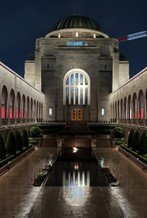
James DOBBIE
Eyes brown, Hair dark, Complexion dark
James Dobbie - a Scottish seaman killed at the first German line
In preparing this story, we would like to acknowledge the following:
- James Tait, genealogy researcher in New Zealand who tracked connections from New Zealand to Australia.
- Untraceable Missing Medals authors who are also searching for James’ family. https://www.facebook.com/untraceablemissingmedals/posts/575880576689291
- Relative Christine Haugen in Vermont USA who sent us to New Zealand.
- Relative Dayleen Easton in Australia who was eventually able to name the New Zealand family.
Can you help identify James?
It has been a long and varied search for James Dobbie’s ancestors in Scotland, Northern Ireland, and New Zealand - with a trail diverting to North America. We believe James has a very good chance of being one of those buried by the Germans in the mass grave at Fromelles, and therefore likely to be one of the 70 (current at 2024) still to be identified in the Pheasant Wood Cemetery. Twenty-six soldiers from James’ Battalion have already been positively identified. Could James be lying with his comrades but not yet identified? In seeking DNA donors, we are particularly searching for James’ maternal grandparents’ lines. They were born in Northern Ireland, but migrated to Glasgow. We seek connections to his mother Catherine CARROLL/CARLIN, grandmother Sarah HARRIGAN and great grandmother Catherine HEGGARTY. For family tree details, see DNA box at the end of this story.
From Scotland to a life on the sea
James’ father was married three times and widowed twice. James was four when his father died and his two half-brothers from the first marriage were a generation older. It seems James was brought up solely by his stepmother, Sarah nee Carleton (third wife), and went to sea as a teenager, a common option in Glasgow. He eventually became a marine fireman.
For nearly 30 years, his home was the sea, and at some stage (perhaps around 1891) he was serving on ships on the Australian, New Zealand and other Pacific routes. This is probably where he made his connections in New Zealand and Australia.
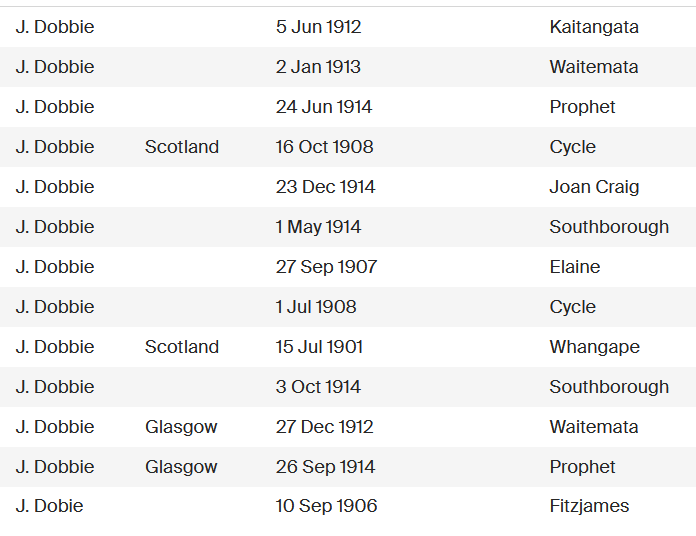
Records indicate that he may have deserted from the ship Loch Sloy in Victoria in 1891 and that he was working as a seaman in 1901 on the ship Orizaba. And he had a home base in Sydney. In the 1901 census, he was living at 27 Darling Street, Balmain only a stone’s throw from the harbour. His next-door neighbour was Kate Qualeigh who later became the wife of the man James was to nominate as his next of kin when he enlisted – Mr Arthur Horsefield.
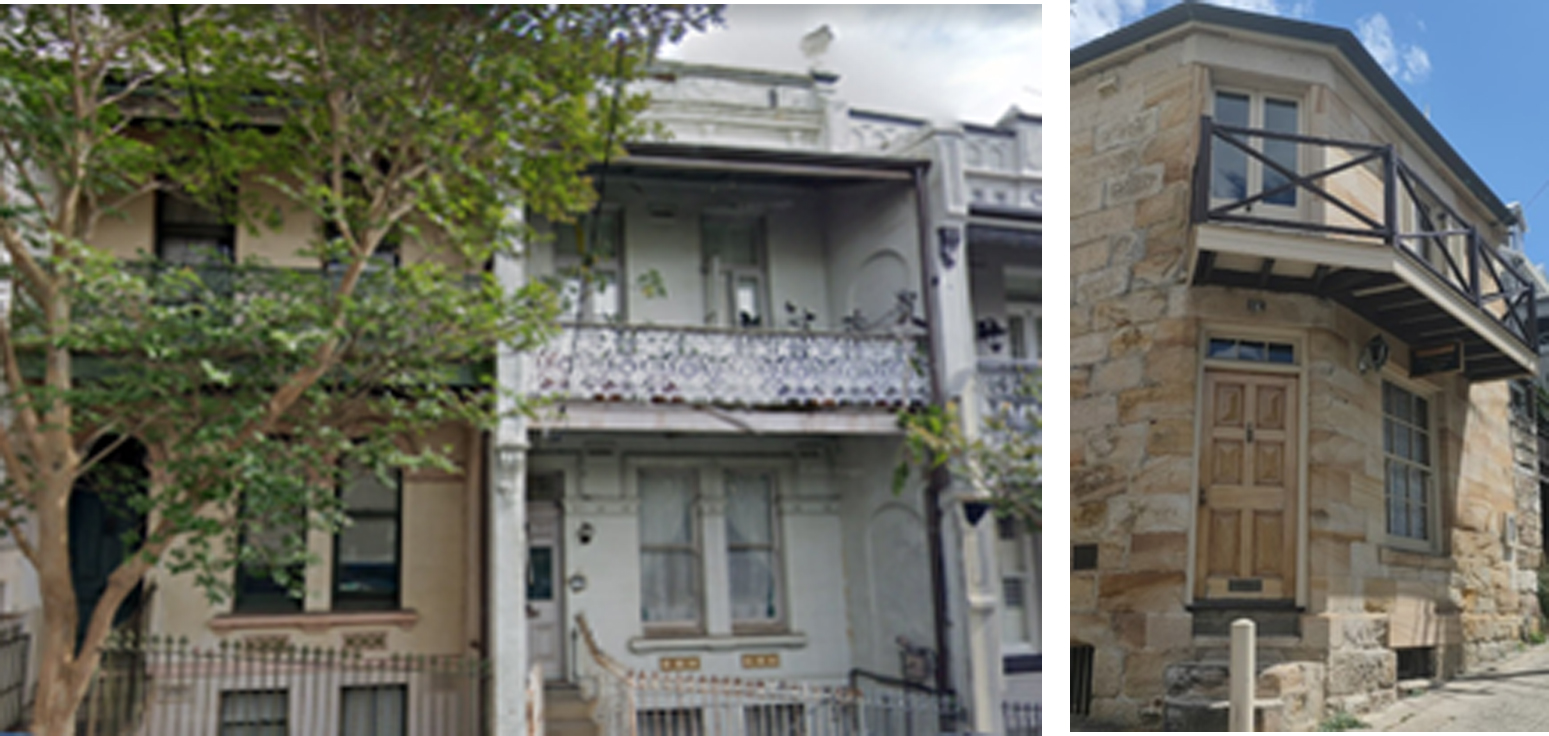
Arthur Horsefield was born in Wairoa, Hawkes Bay in New Zealand in 1878. He arrived in Sydney in 1904 and married Kate Qualeigh in 1905. Arthur ‘s occupation was ‘fireman’ when his son married in 1935 but electoral records regularly show him as a barman. We cannot find him in ‘New South Wales, Register for Seaman’ but maybe Arthur and James met on a ship. It is also possible that Arthur and James met when Arthur was courting James’ neighbour Kate Qualeigh (also recorded as Catherine, Katherine and, in her obituary, Kitty). Like Arthur, Kate could trace her family back to Hawkes Bay in New Zealand.
It is also possible that James came across the Horsefield family in New Zealand as he did stop off in Napier when working as a fireman. He also stopped in Christchurch and Wellington so he may have been in contact with his half-brother, William Dobbie, there after 1905. There is some evidence, therefore, that James had well-established connections with the Horsefield and Quaileigh families who may also have had Scottish backgrounds.
For some years, we thought James’ next of kin may have been just a casual acquaintance - a barman at a waterside hotel. So, it is comforting to now know that James seems to have had very long-standing friends in New Zealand and Australia, possibly including his half-brother, William.

AIF enlistment
In July 1915, James enlisted in the AIF and began training at the Liverpool training camp. He was allocated to the newly formed 30th Battalion, part of the 8th Brigade. Most of its recruits hailed from the Newcastle region and other parts of country New South Wales.
Having survived the camp, the 30th Battalion were well trained, disciplined, able to effectively use rifle and bayonet, and to run with packs or heavy ammunition boxes. By the beginning of November 1915, they were ready to go overseas – quite an adventure for some of the boys from country Australia. Perhaps less so for our more experienced 43-year-old seafarer, Private James Dobbie.
There was the troop train to Central, marching to a review in the Domain, perhaps staying at the Sydney Showgrounds overnight, and then on to the troopship Beltana the next day. While marching to the ship, the crowd showered them with chocolates and cigarettes. Photos of the time show massed crowds dominated by Union Jack flags. With a huge gathering on the wharf to call and sing the farewell songs, ribbons became entangled, streamers tugging, and military bands playing. Launches always followed the troopships down the harbour and out through the heads with packed ferries joining them, ships horns sounding, and the deep horn of the Beltana responding and reminding the small ships to stay clear. For the recruits, this was a last visual connection to family and Australian shores.
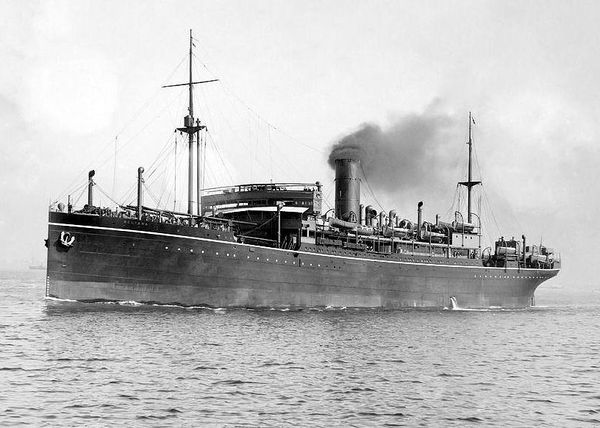
Via Colombo, the troops arrived in Egypt about twenty-eight days after leaving Sydney, first at Port Taufiq in the town of Suez, then entrained again north into the Arabian Peninsula to Tel-el-Kebir, east of Cairo. They then spent six months completing desert and other advanced training, guarding important sites and, during time off, sight-seeing. Perhaps James had been there before on one of his many sea voyages.
To France
In June 1916, it was time for the 30th Battalion to leave Egypt and to join the British Expeditionary Force in France. The Battalion's first major battle was at Fromelles on 19 July 1916. It was tasked with providing carrying parties for supplies and ammunition but was soon drawn into the vicious fighting.
This summary of the Battle of Fromelles has kindly been supplied from Geoffrey Benn's Fromelles: 100 Years of Myths and Lies, published 18 August 2021 with additional notes from C.E.W. Bean, The Australian Imperial Force in France, 1916: the official history of Australia in the war of 1914–1918 vol. 3, Australian War Memorial, Canberra, 1941, chapter 12 and chapter 13 and extracts from Soldiers Stories on this website:
“As the clock ticks over Midnight to the 20th July 1916, Australian soldiers are in trouble. The Germans are on the attack to reclaim their lost territory and the Australians are ‘dug in’ 200 meters behind the German front line.
There is a mix of Battalions building an Australian line behind the German front line, but they end up as 4 separate ‘islands of troops’ in a ‘sea’ of Germans with little communication between themselves or H.Q. The 8th and 14th have little supplies and no way of reaching them. Many soldiers dig in rather than attempt to retreat back to the Australian line.…….”
“At 9.20am on the 20th July, the Bavarian 6th Division Command considers the battle won. An Intelligence Officer notes that the last of the British and Australians left defending themselves have been captured……
“Casualties in the (German) 6th Bavarian Reserve Division totalled 1,582. From the German standpoint, the result was outstanding, and not just because of the highly favourable casualty ratio. Searching the dead and the prisoners, they found a copy of the general order from Haking that was read to all troops on the eve of the assault. By stating quite plainly that the objective was ‘strictly limited to the enemy’s support trenches and no more’, it told them that a feint had been intended.
The battle cost the British 61st Division 1,547 casualties, which represented a loss rate in the assault battalions of 46 percent. As nearly all of the 5th Australian Division had been sucked in, its casualties amounted to 5,533 men, of whom around 2,000 perished. The loss rate in its assault battalions averaged 76 percent, while the flanking battalions suffered over 80 percent casualties. Of the 481 men taken prisoner, about 400 were Australians captured in a single battle. They were taken to Lille, marched through the suburbs and city in order to impress the French and then interrogated.”
James Dobbie was one of many missing from the 30th Battalion.
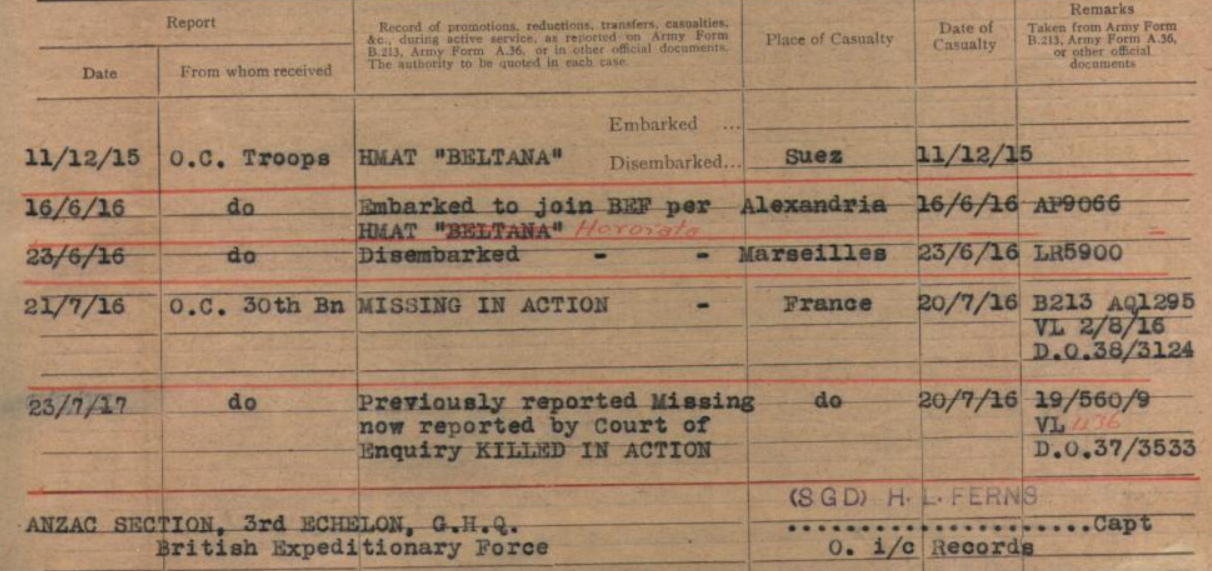
A court of enquiry was held in the field on 23 July 1917 and pronounced James Dobbie’s fate as 'killed in action, 20 July 1916'. This was likely based at least in part on the evidence provided by two fellow 30th Battalion soldiers. The informants, perhaps good mates, were John Hanley who was a 32-year-old from Kurri Kurri, New South Wales and Fred Scholes who came from Warrington in England aged 27. Both survived the war and gave the evidence below.
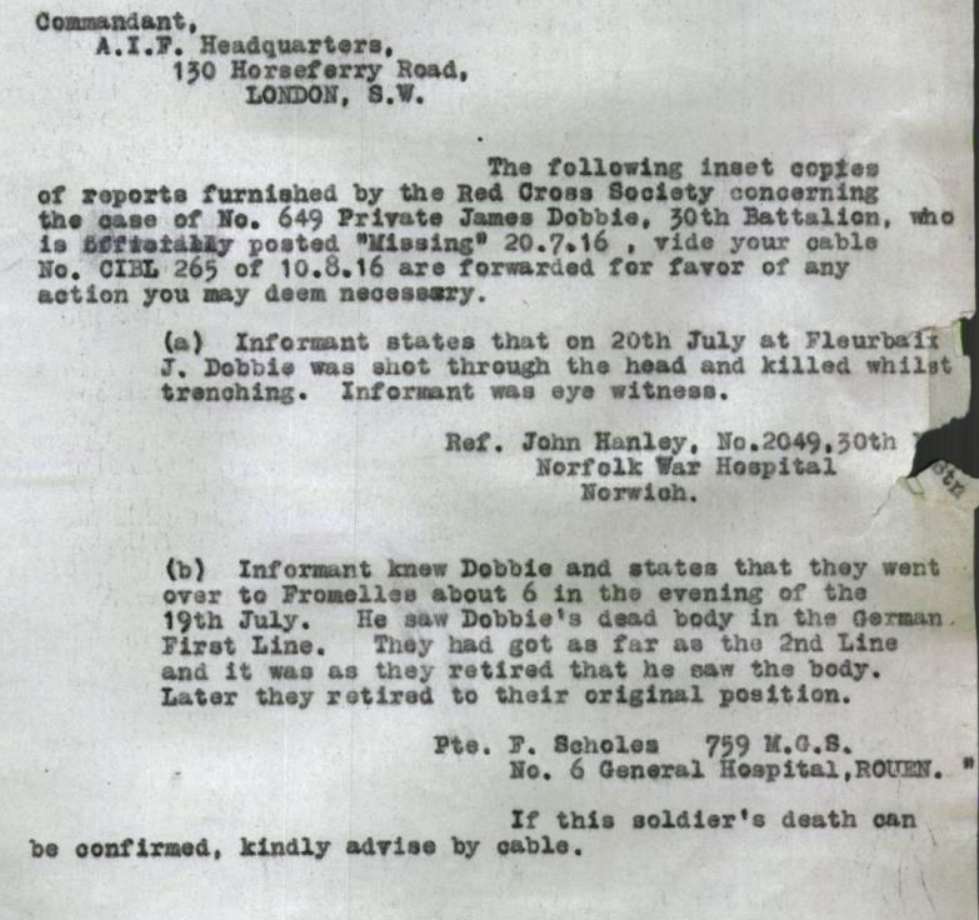
The family tree brick wall. Please help!
As James gave no clue to parents or relatives when he signed up, this search commenced as a brick wall. Since he gave a friend as his next of kin, it suggests that not only did he not have near relatives in Australia but that his parents were dead. This proved to be true as he had lost both by age 4.
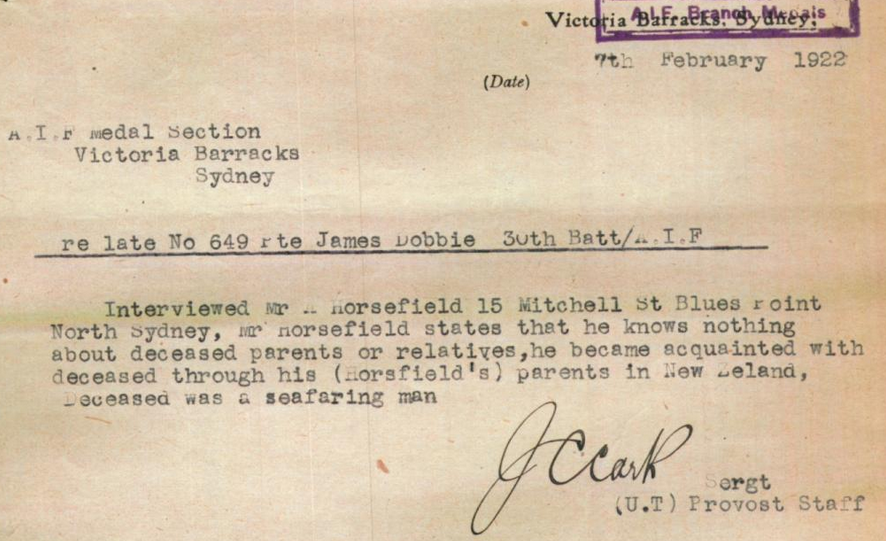
James was eventually found only by researchers diligently following up every James Dobbie from Glasgow (census, marriages, deaths, etc.) to find out where they were during and after the war. Their perseverance paid off.
James was born 4 September 1872 in Glasgow. This would make him almost 43 when he signed up but he gave his age as 40.
a) The Glasgow family: James Dobbie senior.
James Dobbie senior came from a prosperous family of joiners/undertakers:
- James Snr married Jane Carpenter in 1850. They had two sons, William 1852 and Malcolm 1853, then twins (who died aged at about two years), and finally, a daughter Jane who died at three years of age. Mother Jane died in 1869 aged 42.
- James Snr then married Catherine Carlin/Carroll in 1870 and had 3 boys. First came (our) James junior and then twins who died soon after birth. Catherine died about six months later in February 1875, aged 38.
- James Snr married a third time in 1876 to Sarah Carleton (Carlin) and then he died in 1877. There was no issue from this marriage. We note, however, that it is possible that Sarah was already a family connection (Carlin) through James’ mother, Catherine Carlin/Carroll.
On James Snr’s death, this left 4-year-old James Jnr with his new stepmother who appears to have provided a home for him. But what of the first family? By the time James Snr died, his first son William was 25 and married and Malcolm was 23. The two brothers appeared to be running the family business soon after their father’s death. Although the brothers were established elsewhere, it seems that they did keep contact with Sarah and James.
James Jnr and Sarah perhaps had a less prosperous life and at some stage James went to sea. He gave his occupation as a marine fireman when he enlisted in the AIF.
b) The older brothers – looking for DNA
William certainly travelled to New Zealand and was there in 1905 and at the time of his death in 1922. We do not know with any certainty whether his New Zealand residency was consistent or if it was intermittent during those years.
It is his brother Malcolm’s line however, that has provided New Zealand DNA connections. Malcolm and his family travelled to America and returned. One of his descendants, Neil F Dobbie, born in Glasgow in 1902, migrated in 1925 to New Zealand where he married and raised a family.
Neil’s line provided one Y DNA (male line) match in New Zealand, but our efforts to find someone from James’ mothers’ line is a dead end so far. His mother Catherine Carlin (or Carroll) was the daughter of William Carlin/Carroll and Irish born Sarah Harrigan. Her parents were William Harrigan and Catherine Hegarty/Heggerty, both born in Ireland but lived in Scotland.
c) DNA search across three countries
In summary, we may find DNA connections in:
- Scotland: descendants of James DOBBIE and Agnes Gillies Campbell – Scots church, Glasgow
- New Zealand: James’ brother, Malcolm, has a line there through his son, Neil F DOBBIE b 1902, and one DNA donor has already come forward from this line. His other brother, William, died in New Zealand in 1922.
- Northern Ireland: James’ mother’s side – CARROL/CARLIN, HARRIGAN, HEGGARTY families – were born in Northern Ireland and were Roman Catholic.
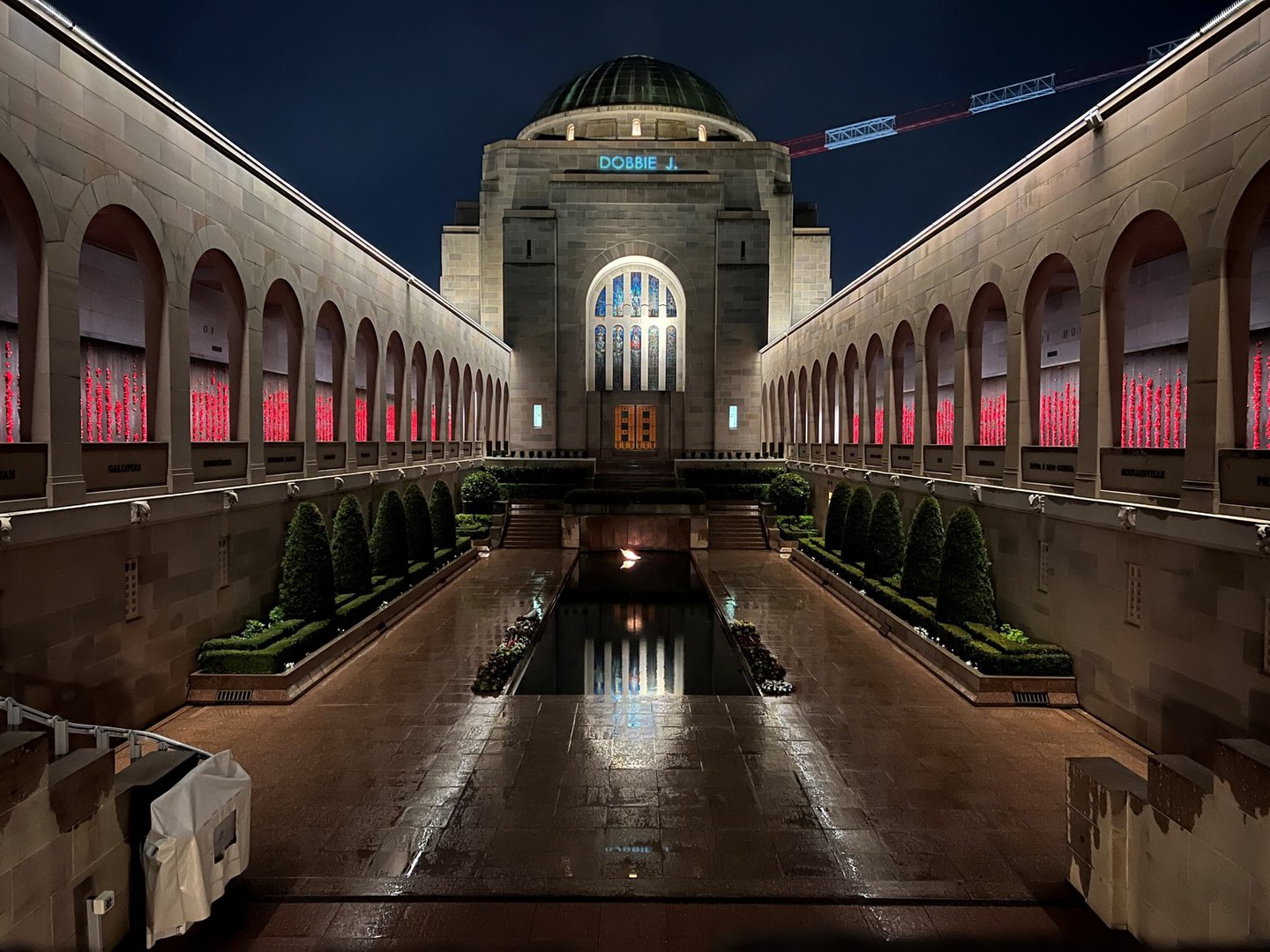
DNA is still being sought for family connections to
| Soldier | James DOBBIE b. 1872 Glasgow, Scotland d. 1916 Fromelles, France td> |
| Parents | James DOBBIE 1825-1877, Glasgow, Scotland and Catherine CARLIN/CARROLL 1837-1875, Glasgow, Scotland |
| Grandparents | |||
| Maternal | James DOBBIE 1798-1869 – a joiner in Glasgow, Scots church and Agnes Gillie CAMPBELL 1804-1870td> | ||
| Maternal Grandparents | William CARLIN/CARROLL b. circa 1810 and Sarah HARRIGAN 1813-73- both born in Ireland but lived in Scotland |
Following the maternal line, Sarah’s parents were: William HARRIGAN and Catherine HEGARTY /HEGGERTY - both born in Ireland but lived in Scotland.
Seeking DNA Donors

Contacts
(Contact: royce@fromelles.info or geoffrey@fromelles.info).
(Contact: army.uwc@defence.gov.au or phone 1800 019 090).
Donations
If you are able, please contribute to the upkeep of this resource.
(Contact: bill@fromelles.info ).
